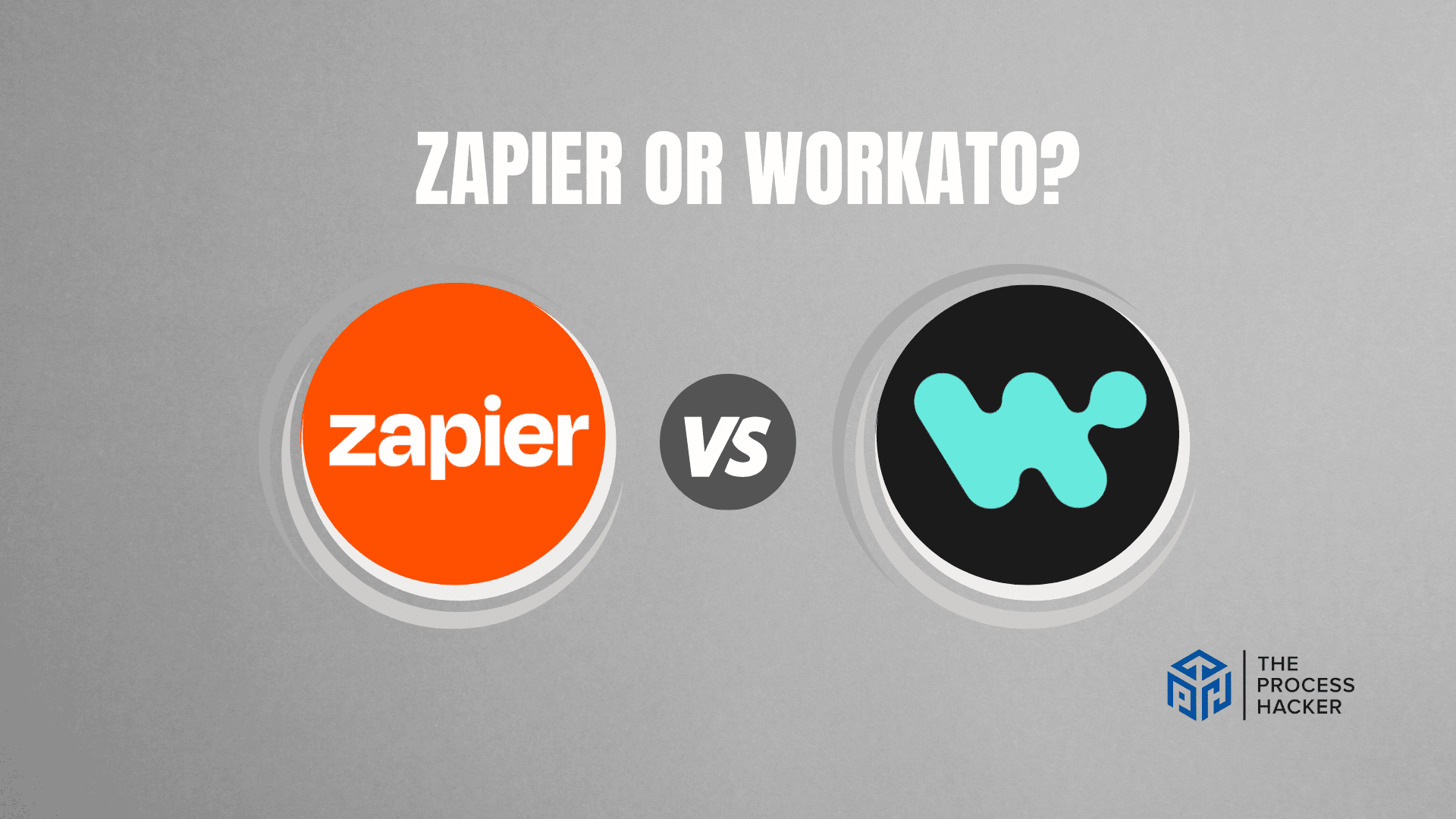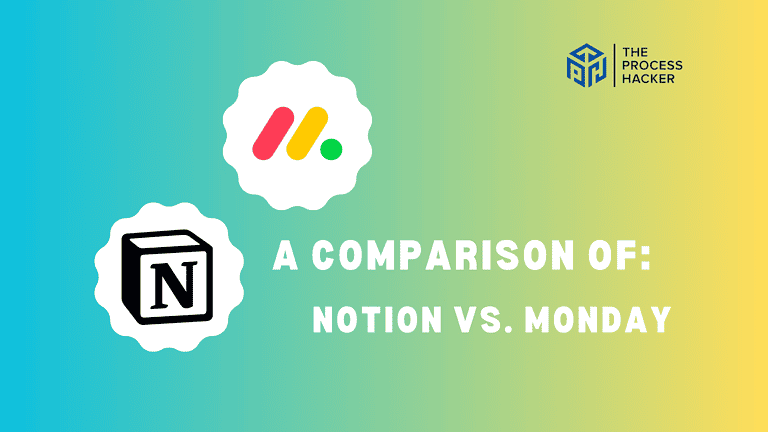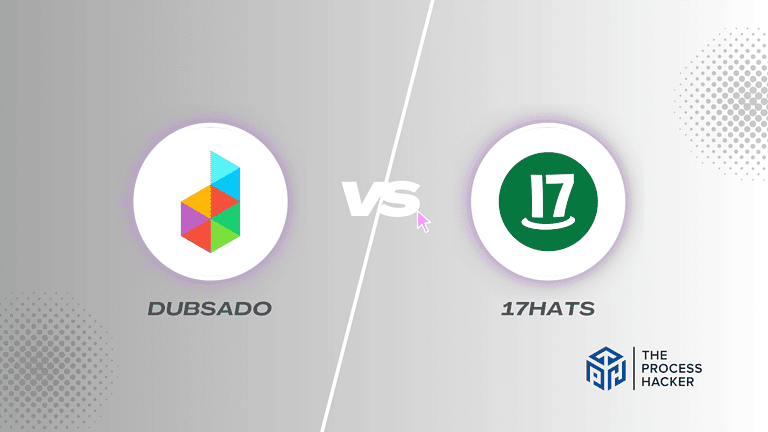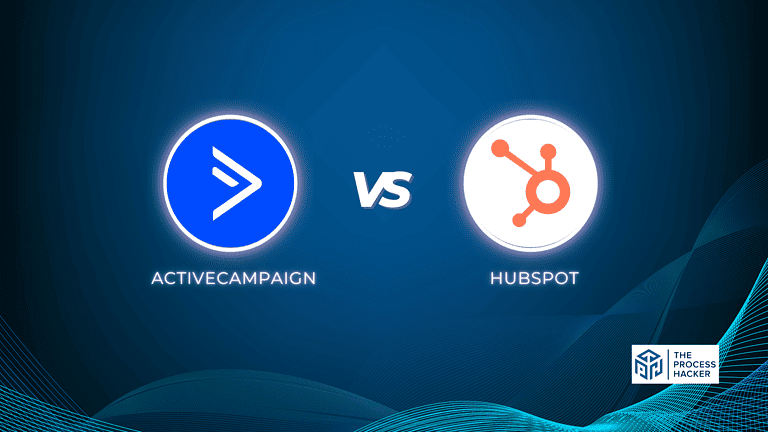Zapier vs Workato: Which Web App is Better for Integration and Workflow Automation?
As a business owner, one of the most valuable things you can do is automate repetitive tasks and streamline your workflows.
This frees up your time and resources to focus on higher-level work that moves the needle. Two leading AI marketing tools that many companies use to automate common business processes through app integrations are Zapier and Workato.
If you purchase through our partner links, we get paid for the referral at no additional cost to you! For more information, visit my disclosure page.
Both offer powerful yet easy-to-use platforms for connecting different tools and creating intricate multi-step workflows. However, they also have some key differences in approach and features that are worth exploring when choosing which one is the best fit for your organization.
In this blog post, I’ll comprehensively compare Zapier and Workato, analyzing their key capabilities, pricing, and use-case suitability to help you determine the superior option for automating your workflows and integrating your essential business apps.
Brief Overview: Zapier vs Workato
First, I’ll give you a quick overview of Zapier and Workato:
Zapier
Zapier is a powerful online automation tool and integration platform that connects your favorite apps and services, streamlining workflows without coding. It enables seamless integrations across over 3,000 apps, enhancing productivity by automating repetitive tasks.
Key Selling Points:
- Extensive App Integration: Connects with over 3,000 apps, including Google Sheets, Slack, and Mailchimp.
- Easy Automation for Any Task: Create workflows with just a few clicks.
- Supports Multi-Step Zaps: Complex workflows can be automated by chaining multiple actions and triggers.
- Built-in Apps: Offers unique utilities like Formatter and Webhooks for advanced tasks.
Workato
Workato is a robust enterprise automation platform that offers integration and workflow automation across various apps and customer data sources. It emphasizes a no-code approach, making it accessible for business users to implement complex system integrations and automate workflows.
Key Selling Points:
- Enterprise-Focused: Tailored for large-scale business requirements.
- Powerful Workflow Automation: Automates not only apps but also complex data workflows.
- Robust Security Features: High compliance and security standards suitable for enterprise environments.
- Community and Support: Provides a strong community and extensive support options.
Quick Verdict: Zapier vs Workato
Zapier shines with its simplicity and broad app integration capabilities. Whether you’re looking to automate social media posts, email notifications, or data transfers between business tools, it offers an intuitive platform to set up workflows known as Zaps.
This ease of use and affordability make Zapier particularly appealing to small businesses and individuals who want to optimize their day-to-day tasks without a hefty investment.
With Workato, large organizations can seamlessly automate and integrate complex workflows across multiple departments. Its capability to handle heavy-duty tasks, coupled with advanced security features, positions it as the go-to choice for enterprises needing a reliable automation tool.
Workato’s strength lies in its deep integration capabilities and ability to support intricate, multi-step workflows requiring precise logic and conditional paths. These make it ideal for businesses with extensive and sophisticated operational needs.
Product Overview: Zapier vs Workato
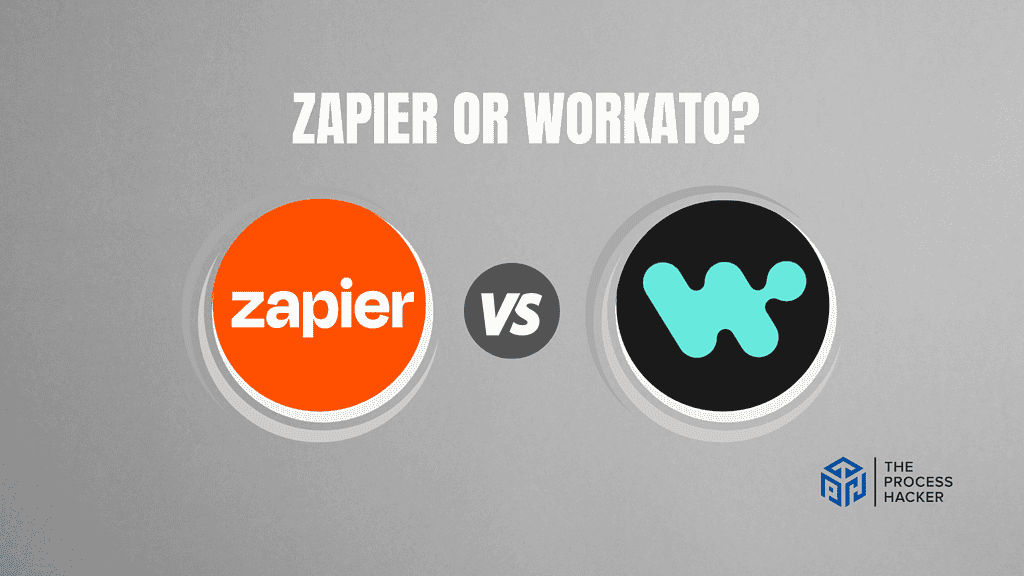
What is it?
Zapier acts like your virtual assistant, linking your favorite apps and streamlining tasks. It automates those tedious, everyday things so you can focus on bigger goals.
Workato is a mighty automation powerhouse designed for larger businesses. It tackles complex workflows, seamlessly connects all your company’s systems, and offers custom and robust solutions.
Who is it for?
Zapier is perfect for individuals, small businesses, and mid-sized teams looking to automate daily tasks and enhance efficiency. If you spend time on repetitive tasks across various applications, Zapier can automate these processes, freeing you up to focus on more strategic activities.
Workato is designed for IT professionals, business analysts, and larger enterprises that require deep integration and automation capabilities across various systems and apps. It’s particularly valuable for organizations needing to maintain rigorous data compliance and security while automating complex business processes.
What makes it special?
Zapier stands out with its user-friendliness—no coding needed! It also connects with many popular apps and offers a free plan to get you started.
Workato’s strengths lie in its adaptability and enterprise-level security. It can be tailored directly to your company’s unique needs and safeguards your sensitive information.
What does it do?
Zapier
- Automatically shares social media posts across different platforms
- Sends a text when you receive an important email
- Backs up your files to cloud storage
Workato
- Streamlines customer onboarding with automated processes
- Syncs inventory updates across different sales platforms
- Generates detailed reports combining data from multiple sources
Quick Comparison: Zapier vs Workato
| Key Features | Zapier | Workato |
|---|---|---|
| #1) Pricing | Winner | |
| #2) Free Plan | Winner | |
| #3) Design & Functionality | Tie | Tie |
| #4) App Integration | Winner | |
| #5) Automated Workflows | Winner | |
| #6) No-Code Automation | Winner | |
| #7) Built-in Apps | Winner | |
| #8) Machine Learning Capabilities | Winner | |
| #9) API Connectivity | Winner | |
| #10) Customizable Dashboards and Reports | Winner | |
| Overall | For Small Businesses | For Mid-sized and Large Businesses |
Feature Comparison: Zapier vs Workato
Let’s compare the features of these workflow automation apps so you can make the right decision for your business.
#1) Pricing
Zapier offers a tiered pricing structure based on the monthly volume of automated tasks you’ll run. Their basic paid plan starts at $29.99/month, with Team and Enterprise options available for larger organizations.
Workato takes a custom approach to pricing. Their plans are tailored to your unique needs, encompassing factors like the complexity of your workflows and the types of integrations required.
If you have straightforward automation requirements and prefer a predictable monthly expense, Zapier is the more cost-effective choice. Workato’s adaptable pricing could be a better fit if your workflows are complex and require high customization.
Verdict: For pricing, Zapier’s tiered system generally provides a more accessible starting point.
#2) Free Plan
Zapier offers a free-forever plan that lets you automate basic workflows with up to 100 monthly tasks. This is a great way to test the waters before committing to a paid subscription.
Workato provides a free trial, allowing you to explore the platform’s capabilities before deciding if it fits your needs correctly. You’ll need to contact them directly to set up your trial period.
So, which approach is better? If you’re eager to experiment with automation immediately, Zapier’s free-forever plan gives you immediate access. If you want a more in-depth exploration with the potential for expanded features, Workato’s free trial is the way to go.
Verdict: Zapier’s free plan takes the lead for ease of access.
#3) Design & Functionality
Zapier is known for its user-friendly, drag-and-drop interface. Setting up automation (or “Zaps”) is simple and intuitive, even without technical experience. Their focus is on streamlining everyday tasks with minimal complexity.
Workato provides a more robust and customizable automation environment. It handles complex business workflows advanced logic, and allows for deeper control over how your data flows between apps. This power comes with a slightly steeper learning curve.
When comparing the design and functionality of Zapier and Workato, your choice comes down to the complexity of your needs and your comfort with technology. Zapier’s straightforward, user-friendly design is ideal if you need simplicity and quick automation setups. On the other hand, if you require detailed control over complex automation and have the technical skills to manage it, Workato’s sophisticated and powerful interface is more suitable.
Verdict: For simplicity and ease of use, Zapier is the top choice. For comprehensive, complex automation capabilities, Workato excels.
#4) App Integration
Zapier boasts a vast library of integrations – they support over 5000 popular apps! So, if you’re already using well-known tools, there’s a good chance Zapier can connect them for you. This makes setting up automation a breeze.
Workato also lets you create custom integrations, though its selection isn’t quite as massive as Zapier’s. It supports enterprise-grade software and gives you more detailed control over how your data moves between different systems.
Deciding which product is better depends largely on your specific needs. If you need a user-friendly tool with extensive app options for straightforward automation, Zapier is the way to go. However, if your requirements include handling complex system integrations and advanced workflow automation within a corporate setting, Workato is the better choice.
Verdict: Zapier is ideal for simplicity and broad app compatibility. Workato stands out for complex, enterprise-level integration needs.
#5) Automation of Workflows
Zapier excels at simplifying automation. Its focus on “if this, then that” workflows makes connecting web apps and triggering actions easy. It’s perfect for streamlining everyday tasks without a lot of fuss.
Workato takes a more robust approach to workflow automation. If needed, it lets you build complex workflows with multiple steps, conditional logic, and custom code. This gives you immense flexibility for automating even the most intricate processes.
Choosing the better product for automating workflows depends on your specific needs. If ease of use and speed of setup are your priorities, and if your automation needs are relatively straightforward, then Zapier is likely your best bet. However, in environments where workflows are complex, highly customized, and data-intensive, Workato’s advanced features provide the necessary depth and control.
Verdict: Workato has the edge for handling complex workflows.
#6) No-Code Automation
Zapier is famous for its no-code approach. Building automation is as simple as selecting apps and defining triggers and actions – no coding experience is necessary! This makes it super accessible for anyone, even if you’ve never automated anything.
Workato also offers a primarily no-code environment for building workflows. While you occasionally dip into basic scripting for particular needs, most of your automation can be created without writing complex code.
Both tools simplify automation, but Zapier’s simplicity gives it a slight edge, especially if you’re entirely new. Workato still offers a largely no-code experience with more potential depth.
Verdict: For pure ease of use in no-code automation, Zapier takes the win.
#7) Built-in Apps
Zapier offers handy built-in apps covering everyday tasks like email, scheduling, and basic calculations. These tools let you create automation without needing to connect to additional external services. It is also one of the best AI sales tools on the market.
Workato has a more extensive selection of built-in apps and utilities. These give you greater control over data manipulation and complex logic and even let you interact directly with databases within your workflows.
Which one comes out on top? If your automations mostly involve simple actions with popular external apps, Zapier’s built-in tools are enough. However, if you need to transform data, work with databases, or handle intricate logic directly within your workflows, Workato’s built-in app selection provides more power.
Verdict: Workato’s built-in apps offer apparent flexibility and advanced functionality advantages.
#8) Machine Learning Capabilities
Zapier lets you integrate with some popular machine learning tools, allowing you to add AI-powered features to your automation. For example, you could connect a tool that analyzes the sentiment of customer emails to trigger different actions.
Workato takes a more robust approach to machine learning. It provides built-in advanced capabilities for tasks like image classification, text analysis, and predictive modeling. This lets you incorporate machine learning directly into your workflows without needing as many external tools.
So, which platform is better for AI? If you want to connect to existing machine learning services, Zapier gets the job done. For deeper integration of AI and machine learning directly into your workflows, Workato’s built-in features are the clear winner.
Verdict: For advanced machine learning integration, Workato offers greater flexibility.
#9) API Connectivity
Zapier lets you connect to apps and services even if they don’t have a dedicated Zapier integration. Its built-in tools allow basic interactions with APIs, which can be handy for simple tasks.
Workato excels at API connectivity. It offers advanced features for working with APIs, including custom authentication, detailed data mapping, and the ability to handle complex API structures.
So, which one takes the crown? If you need fundamental interactions with the occasional API, Zapier will get the job done. However, if APIs are central to your workflows or you work with custom systems, Workato’s robust API handling is necessary.
Verdict: For in-depth API connectivity and customization, Workato is the clear winner.
#10) Customizable Dashboards and Reports
Zapier allows you to monitor your Zaps with a straightforward dashboard that shows the activity and history of your automation. While it provides essential insights, the customization options for dashboards and reports are limited, focusing primarily on simplicity and ease of use.
Workato, on the other hand, offers highly customizable dashboards and reports that can be tailored to meet your organization’s specific needs. You can create detailed reports on workflow performance, track real-time data, and configure dashboards to display critical metrics, making it a powerful tool for data-driven decision-making.
When it comes to customizable dashboards and reports, Workato clearly leads. Its ability to provide extensive customization and deep insights makes it more suitable for organizations that rely heavily on data analytics and require detailed reporting on their automation processes.
Verdict: For customizable dashboards and reports, Workato is the better choice.
Final Thoughts on Zapier vs Workato
Zapier and Workato are powerful automation tools that cater to slightly different needs.
Zapier is the go-to choice for small businesses or those who want quick and easy automation for common tasks. Its simplicity, affordability, and massive app library make it incredibly accessible.
Workato is best for mid-sized to large businesses that need highly customized and complex workflows. Its advanced features focus on enterprise integrations, and flexibility easily handles intricate automation scenarios.
Ultimately, the best choice depends on your specific requirements. I’ve worked with both platforms extensively and can confidently recommend them based on your needs.
To streamline and simplify your processes, I would recommend exploring Zapier!

